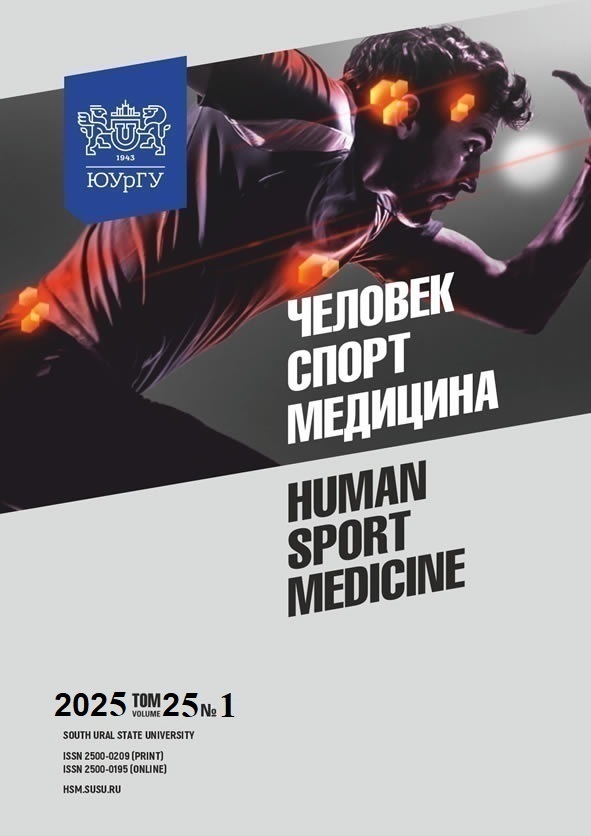CURRENT PERSPECTIVES ON TRAUMATISM IN WRESTLERS AND ARM WRESTLERS: AN ANALYSIS OF ANTHROPOMETRIC AND PHYSIOLOGICAL CORRELATES
Abstract
Aim: this study aimed to investigate the relationship between injury rates in wrestlers and arm wrestlers and their anthropometric, physiological characteristics, as well as their sports titles. Materials and methods. The study involved 180 athletes from Penza, Kuznetsk, and surrounding districts of the Penza region, including 90 Greco-Roman wrestlers and 90 arm wrestlers. Data were analyzed using regression and correlation analyses. Results. Among wrestlers, injury rates demonstrated significant negative correlations with hip circumference (r = –0.35; p = 0.0007), calf circumference (r = –0.35; p = 0.0008), and PWC170 (r = –0.34; p = 0.0012). Among arm wrestlers, injury rates demonstrated significant negative correlations with upper arm circumference (r = –0.51; p < 0.0001), lower arm circumference (r = –0.58; p < 0.0001), strength measurements (r = –0.52; p < 0.0001), and upper limb length (r = –0.45; p < 0.0001). Additionally, arm wrestlers demonstrated significant correlations between injury rates and lower arm (AUC = –0.87; p = 0.0249) and upper arm circumference measurements (AUC = 0.81; p = 0.0494). Conclusion. The findings indicate that wrestlers with lower physical performance and smaller hip and calf circumference measurements are at a higher risk of injury. Arm wrestlers with smaller upper arm and lower arm circumference measurements, strength measurements, reduced upper limb length are predisposed to injuries and have lower chances to achieve sports titles.
References
References on translit
Copyright (c) 2025 Human. Sport. Medicine

This work is licensed under a Creative Commons Attribution-NonCommercial-NoDerivatives 4.0 International License.















